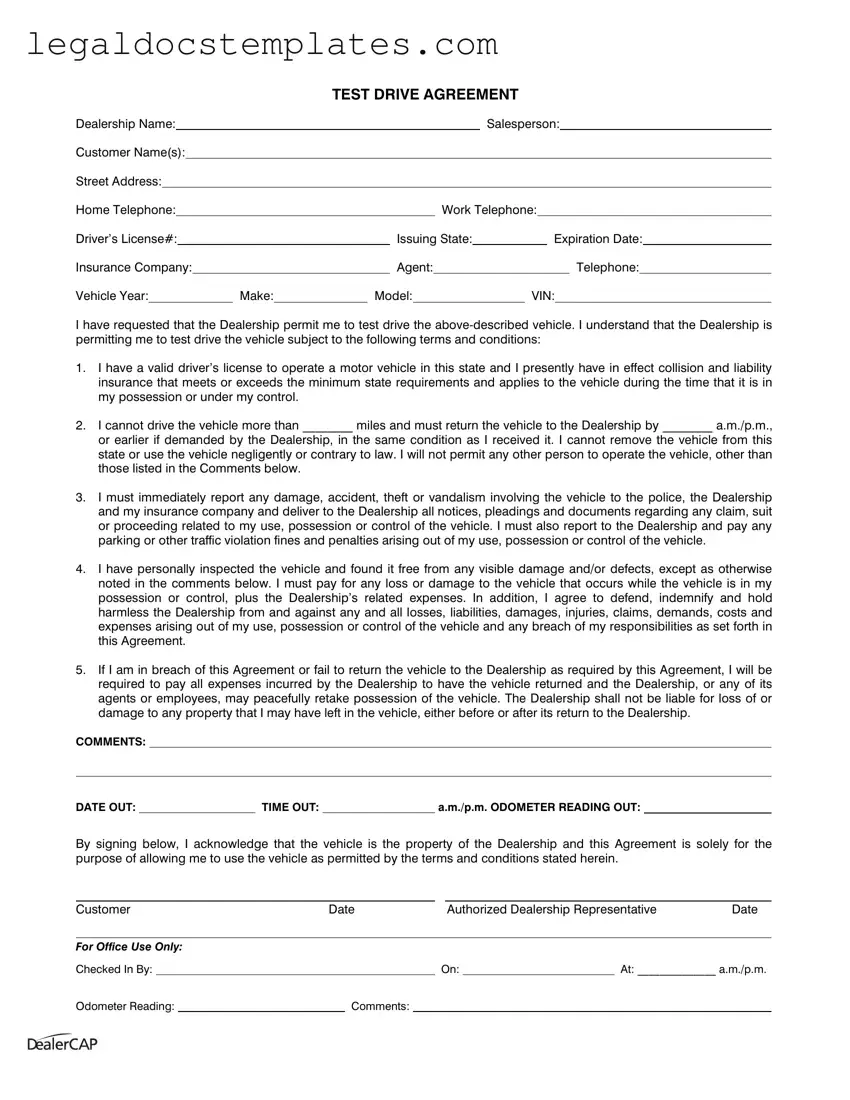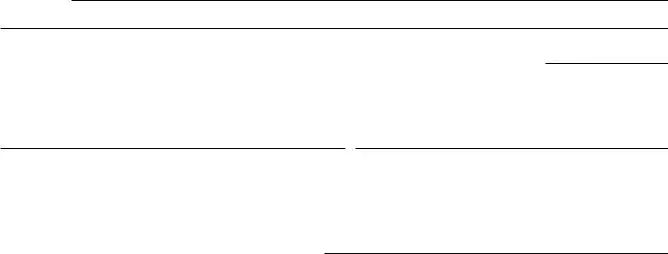A Rental Agreement is closely related to a Test Drive Agreement in terms of structure and content. Similar to the Test Drive form, a Rental Agreement typically lists the names of the renter and the rental company, vehicle details, and specific terms and conditions that govern the rental period. Both documents include clauses about the condition of the vehicle, the renter's responsibilities for damages, and insurance requirements. However, a Rental Agreement usually covers a longer period and involves payment for the use of the vehicle, unlike a test drive that is typically short-term and free.
An Equipment Loan Agreement shares similarities with a Test Drive Agreement, as both outline the temporary transfer of property to an individual under certain conditions. In an Equipment Loan Agreement, details about the equipment, the borrower's responsibilities, and the period of the loan are specified, akin to how a Test Drive form specifies vehicle information, driver responsibilities, and the test drive period. Both agreements aim to protect the owner's property and ensure its return in good condition.
A Liability Waiver form is another document that resembles a Test Drive Agreement. This type of form typically requires the participant to acknowledge the risks involved in an activity and waive their right to hold the provider liable for any related injuries or damages. Similarly, the Test Drive Agreement includes clauses that make the driver responsible for damages and indemnify the dealership. While aimed at different activities, both documents are designed to minimize legal risks for the providers.
A Vehicle Lease Agreement and a Test Drive Agreement share common elements, particularly in the detailing of vehicle specifications, terms of use, and conditions regarding the care and return of the vehicle. The key difference is the duration and financial aspects; a lease agreement involves regular payments for the long-term use of the vehicle while a test drive is short and typically free. Both, however, hold the user accountable for any damages incurred during their period of control.
An Insurance Policy Document, especially for auto insurance, has similarities with a Test Drive Agreement since both involve conditions related to vehicle use and insurance coverage. The Test Drive form requires the driver to have adequate insurance, similar to how an insurance policy outlines coverage, liabilities, and obligations. Both documents are integral in defining the scope of financial responsibility and liability in the context of vehicle use.
A Sales Contract for a vehicle shares some similarities with a Test Drive Agreement, particularly in the identification of the vehicle and the parties involved. Both documents stipulate conditions concerning the vehicle's use, though a Sales Contract culminates in the transfer of ownership, while a Test Drive Agreement is for temporary use without transfer of property. The emphasis on the vehicle's condition and the obligations of the parties involved are common to both documents.
A Service Agreement, especially for vehicle maintenance or repair services, and a Test Drive Agreement have parallels in the detailing of responsibilities and conditions. Both documents may specify the condition of the vehicle and outline specific responsibilities—such as reporting damages in the case of the Test Drive form, and performing certain services in the case of a Service Agreement. Each agreement sets expectations for the condition of the vehicle at the end of the agreement term.
A Parking Space Rental Agreement, while focused on the use of space rather than a vehicle, shares the concept of temporarily allocating rights under certain conditions, akin to a Test Drive Agreement. Both outline the terms under which one party permits the use of its property (a vehicle or parking space) by another party, including the duration and specific rules to be followed, with the goal of protecting the owner's interests.
A Loan Agreement, in the broader sense of borrowing items other than vehicles, has structural similarities with a Test Drive Agreement. It lays out terms under which one party lends an item to another, specifying the return condition and period of the loan. Although the items and purposes differ, both agreements are designed to ensure the borrower respects the owner's property and returns it in an agreed-upon condition.
Lastly, a Consent Form, particularly for activities requiring permission, parallels the Test Drive Agreement in its function of granting rights under specified conditions. While consent forms may be used in various contexts, such as medical treatments or school field trips, the underlying principle of acknowledging and agreeing to certain terms before proceeding is shared with the Test Drive Agreement. Both serve to document the agreement between two parties and outline the scope of permission granted.

